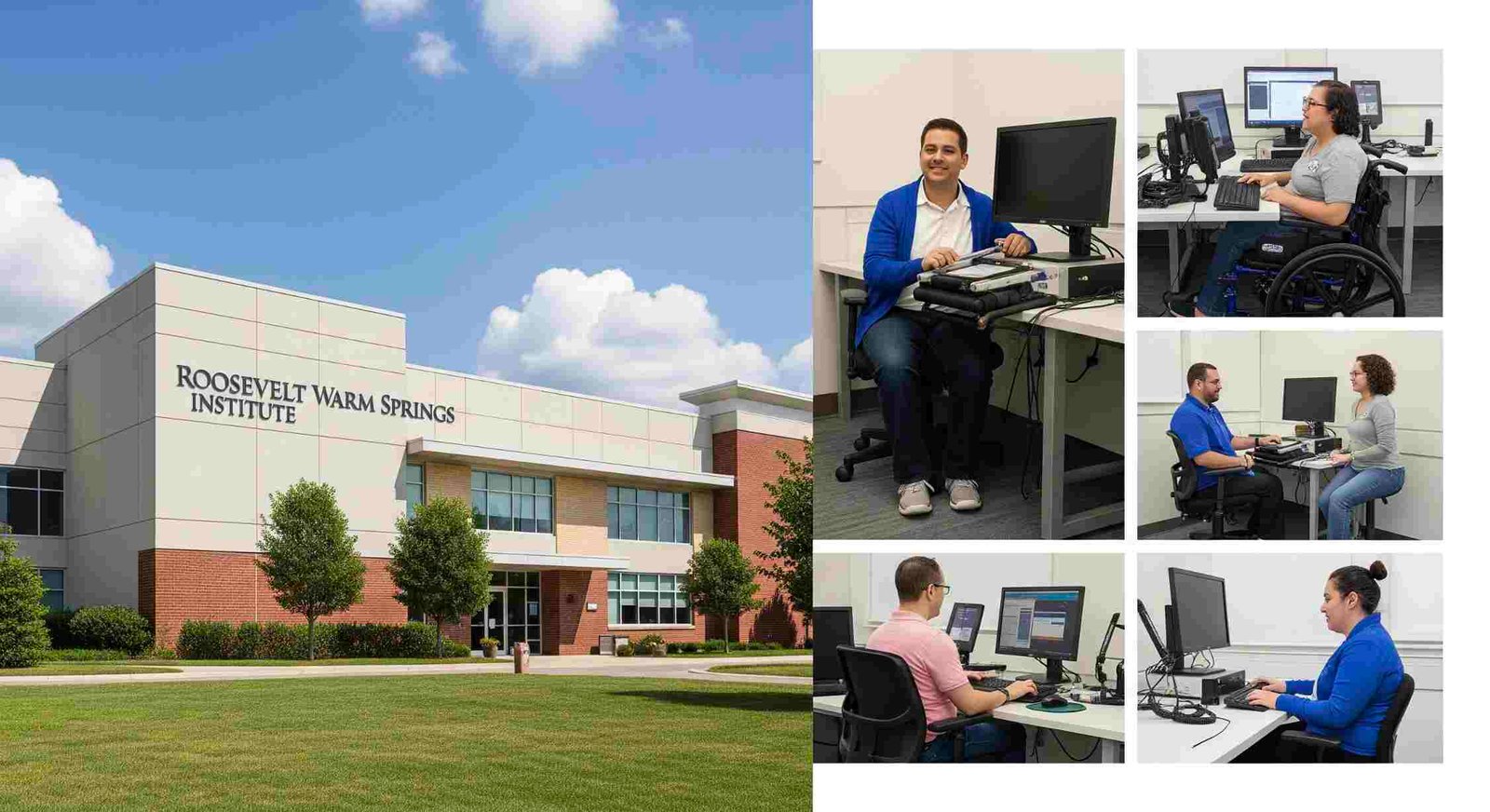tech
Empowering Abilities: Assistive Work Technology Assessment at Roosevelt Warm Springs

When it comes to promoting independence and employment opportunities for individuals with disabilities, few initiatives are as impactful as the assistive work technology assessment at Roosevelt Warm Springs. Located in Georgia, this historic and highly respected rehabilitation center blends modern technology with personalized care to help clients overcome employment barriers. Through comprehensive assessments and tailored interventions, Roosevelt Warm Springs helps individuals harness their full potential using assistive technology designed to meet their unique needs.
Let’s explore how these assessments work, who benefits from them, and why this program continues to lead the way in inclusive workforce development.
Understanding Assistive Work Technology
Assistive work technology includes devices and tools that support individuals with disabilities in performing job-related tasks. From screen readers and ergonomic equipment to communication devices and adaptive software, this technology is designed to increase productivity and independence in the workplace.
What Makes Technology “Assistive”?
Any tool that compensates for a functional limitation—whether physical, sensory, or cognitive—can be considered assistive. It may involve voice recognition for someone who cannot type, magnification software for someone with low vision, or even customized seating for better mobility and comfort during work.
The Roosevelt Warm Springs Advantage
The Roosevelt Warm Springs Rehabilitation and Specialty Hospitals have long been at the forefront of disability support. Built on a foundation of compassion and progress, the center offers holistic services that go beyond therapy and training.
The assistive work technology assessment at Roosevelt Warm Springs is part of their Vocational Rehabilitation (VR) services. Specialists conduct one-on-one evaluations to determine what technologies can help individuals succeed in their desired careers. These evaluations are comprehensive, considering not only the individual’s disability but also their employment goals, workplace environments, and personal preferences.
Assessment Process: A Step-by-Step Approach
One of the standout features of the program is its structured, client-centered assessment process. It ensures that every recommendation is practical, affordable, and compatible with the client’s professional goals.
Step 1: Initial Interview
A detailed interview is conducted to understand the individual’s medical background, work history, challenges, and aspirations. This helps build a profile that guides the rest of the process.
Step 2: Functional Evaluation
Specialists observe and test how the individual performs typical work tasks. This may include typing, lifting, communication, or computer usage. It helps identify specific areas where technology could offer support.
Step 3: Device Trials and Recommendations
Using Roosevelt’s vast inventory of assistive technology, individuals are able to trial devices in real-time settings. Whether it’s a voice-command workstation or a motorized adjustable desk, the person can experience how the tech works before making any commitments.
Step 4: Final Report and Training Plan
A comprehensive report is generated, including personalized recommendations and a plan for implementation and training. The assistive work technology assessment at Roosevelt Warm Springs ensures no one is left to figure things out on their own.
Who Benefits from Assistive Work Technology?
The short answer: anyone facing challenges at work due to a disability. This includes individuals with visual or hearing impairments, physical limitations, or neurodiverse conditions like autism or ADHD.
Employers also benefit. By accommodating employees through appropriate technologies, companies can retain skilled workers, boost morale, and demonstrate inclusivity. The assistive work technology assessment at Roosevelt Warm Springs serves as a bridge between talent and opportunity, making workplaces more accessible and productive.
Integration Into Vocational Training and Job Placement
Roosevelt Warm Springs doesn’t stop at assessment—it integrates assistive technology into broader vocational programs. Clients may continue their training using their newly recommended devices, gaining confidence before entering the job market.
Real-World Job Applications
In partnership with local businesses and government agencies, Roosevelt ensures that job placements are aligned with the client’s skills and the tech tools they’ll use. This ecosystem of support gives clients the best chance of long-term success.
Frequently Asked Questions
What is the purpose of an assistive work technology assessment?
It evaluates which technologies can help individuals with disabilities perform specific job tasks more effectively and independently.
Who conducts the assessments at Roosevelt Warm Springs?
Certified rehabilitation technology specialists and occupational therapists with experience in vocational rehabilitation.
Is the service free?
Most assessments are covered through state vocational rehabilitation programs or other funding sources for individuals who qualify.
Can I bring my own job description for assessment?
Yes. In fact, bringing a current or desired job description helps the team tailor the technology to real work scenarios.
Are employers involved in the process?
Employers can be part of the planning to ensure seamless workplace integration and any necessary accommodations.
Conclusion
The assistive work technology assessment at Roosevelt Warm Springs represents more than just access to gadgets—it symbolizes hope, opportunity, and empowerment for individuals with disabilities. By pairing technology with personalized support, this program enables people to work smarter, overcome limitations, and build meaningful careers.
Whether you’re a job seeker exploring tools that can support your success or an employer wanting to create a more inclusive workspace, Roosevelt Warm Springs stands as a national example of innovation and inclusion. Investing in assistive technology isn’t just good practice—it’s a transformative step toward a more equitable future.

 tech3 weeks ago
tech3 weeks agoExploring the World of AI Creativity Through ai-work-archives-ghaus-editz

 business1 month ago
business1 month agoExploring the Rise of Sichuan Tong Dao Technology Co Ltd in China’s Tech Industry

 tech1 month ago
tech1 month agoEmpowering Digital Innovation: Anantax Technologies Pvt Ltd at the Forefront of IT Solutions

 tech1 month ago
tech1 month agoThe Ultimate Guide on How to Run Star Technology Modpack Server Minecraft

























